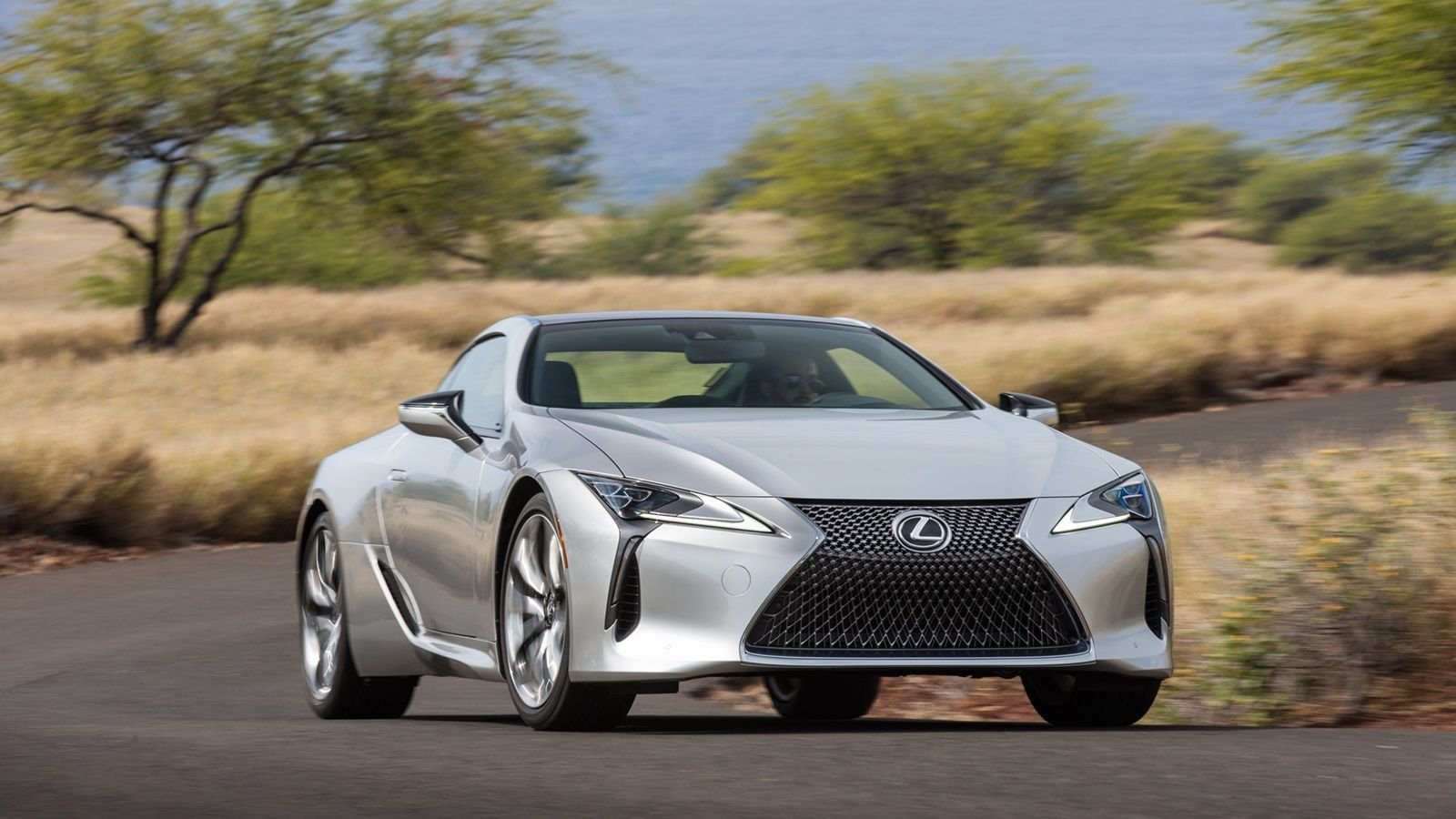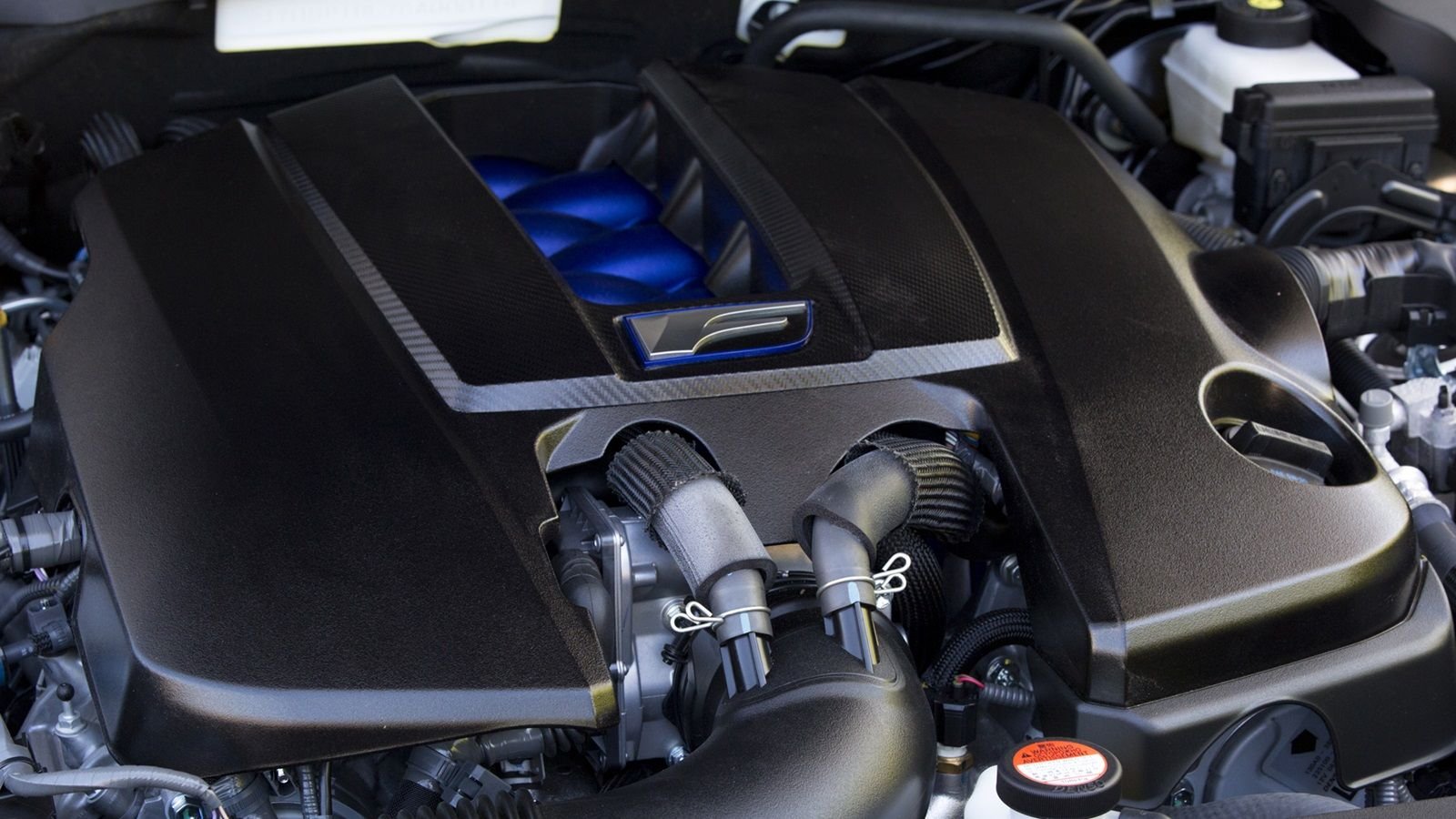Ranking Every Lexus V8 Engine From Worst to First!
There are seven Lexus V8 engine families. Here's how they rank from worst to first!
















Intro
Everyone loves a V8 engine (until it comes time to visit a gas station). However, it is quickly becoming a relic of the past as Lexus and most other manufacturers rush to make all-electric vehicles. So, with the days of the V8 numbered we thought now was a good time to take a look at the V8 engines that Lexus has offered us over the years. Many people think of American cars when they think of the V8 but the good folks at Lexus have provided the world with some fantastic V8 engines as well. None of them are bad but some are better than others. Now, since the list would get along if we separate each variant over the years, we've attempted to rank the seven Lexus V8 engine families offered over the years. Read on to see if you agree with our rankings.
7. 4.6L 1UR-FSE
The 1UR-FSE engine family first appeared in the Lexus LS 460 and LS 460 L sedans in 2006. This engine family utilized D-4S direct injection and dual VVT-iE. The block and cylinder heads are aluminum alloy. Like just about everything that comes out of Toyota and Lexus the engine was pretty reliable. However, the water pump was a weak point and the hydraulic chain tensioner could fail.
Applications:
- 2006 - 2017 Lexus LS 460 & LS 460 L
- 2008 - 2011 Lexus GS 460
- 2009 - 2013 Toyota Crown Majesta
Output:
- 385 Horsepower; 369 Pound-Feet
Engine Specs:
- Displacement – 4.6L
- Compression Ratio – 11.8:1
- Bore, mm – 94.0
- Stroke, mm – 83.0
6. 4.6L 1UR-FE
The 1UR-FE is essentially the 1UR-FSE only without the D-4S direct injection. It replaced the 2UZ-FE engine family. We ranked this engine slightly higher than the 1UR-FSE because of the simplicity without direct injection and the longevity that the engine saw in various Lexus and Toyota applications. This engine was first offered in the Middle East market but then became available in the U.S. and other countries starting with the 2010 model year. The engine was reliable, but the water pump again is a weak point and these engines can consume some oil.
Applications:
- 2006 - 2017 Lexus LS 460 & LS 460 L (Middle East Market)
- 2005 - 2011 Lexus GS 460 (Middle East Market)
- 2009 - 2023 Lexus GX 460
- 2012 – 2021 Toyota Land Cruiser (Japan, China, Middle East, Australia Markets)
- 2009 – 2012 Toyota Sequoia
- 2009 – 2019 Toyota Tundra
Output:
- 304 - 322 Horsepower; 324 - 339 Pound-Feet
Engine Specs:
- Displacement – 4.6L
- Compression Ratio – 10.2:1
- Bore, mm – 94.0
- Stroke, mm – 83.0
5. 4.3L 3UZ-FE
The 3UZ-FE was first introduced back in 2000 in the Lexus LS 430 and GS 430 sedans. The engine was an evolution of the 1UZ-FE with the displacement punched out from 4.0 to 4.3L. The 3UZ also came with all the latest electronics at the time. These engines have proven to be extremely reliable and with proper maintenance will last over 300,000 miles.
Applications:
- 2000 - 2006 Lexus LS 430
- 2000 - 2007 Lexus GS 430
- 2001 – 2010 Lexus SC 430
- 2004 – 2013 Toyota Crown Majesta
Output:
- 300 Horsepower; 325 Pound-Feet
Engine Specs:
- Displacement – 4.3L
- Compression Ratio – 10.5:1
- Bore, mm – 91.0
- Stroke, mm – 82.5
4. 4.7L 2UZ-FE
The 2UZ-FE was developed to be a durable engine for use in trucks and SUVs. For that type of application, you want a large displacement, low revving, high torque engine. And that is exactly what the 2UZ-FE is. The engine first came on the market back in 1998 and stayed on the market until 2011. In 2007 the engines received VVTi. The 2UZ-FE first saw duty in the Toyota Land Cruiser and its sibling the Lexus LX 470. This cast iron block engine is one of the most durable the company has ever made. Change the timing belt as required and these engines will last several hundred thousand miles without an issue.
Applications:
- 2002 – 2004 Lexus GX 470
- 1998 – 2005 Lexus LX 470
- 1998 – 2005 Toyota Land Cruiser
- 2002 – 2004 Toyota 4Runner
- 1999 – 2004 Toyota Tundra
- 2000 – 2004 Toyota Sequoia
- 2004–2009 Lexus GX 470 (VVTi)
- 2005–2007 Lexus LX 470 (VVTi)
- 2005–2009 Toyota 4Runner (VVTi)
- 2005–2011 Toyota Land Cruiser (VVTi)
- 2005–2009 Toyota Tundra (VVTi)
- 2004–2009 Toyota Sequoia (VVTi)
Output:
- 235 Horsepower; 320 Pound-Feet (Non-VVTi)
- 282 Horsepower; 325 Pound-Feet (VVTi)
Engine Specs:
- Displacement – 4.7L
- Compression Ratio – 9.6:1 (Non-VVTi); 10.0:1 (VVTi)
- Bore, mm – 94.0
- Stroke, mm – 84.0
3. 5.7L 3UR-FE
The biggest displacement Lexus V8 ever made. The 5.7L 3UR-FE was developed for use in the big Toyota and Lexus trucks and SUVs. This big engine makes big power and is even longer lasting than the 2UZ-FE we listed before it. The engine came out in 2007 and was under the hood of the Toyota Tundra, Sequoia, Land Cruiser, and Lexus LX 570. This engine saw over 1.3 million kilometers (about 808,000 miles) of durability testing. So, it is no wonder they last as long as they do.
Applications:
- 2007 – 2021 Toyota Tundra
- 2007 – 2022 Toyota Sequoia
- 2007 – 2022 Toyota Land Cruiser
- 2007 – 2021 Lexus LX 570
Output:
- 381 Horsepower; 401 Pound-Feet
Engine Specs:
- Displacement – 5.7L
- Compression Ratio – 10.2:1
- Bore, mm – 94.0
- Stroke, mm – 102.0
2. 4.0L 1UZ-FE
The V8 that started it all for Lexus. This was the engine found under the hood of the original LS 400. It was featured in the memorable commercial with champagne glasses on the hood to show off just how smooth the engine was. A lot of development went into this engine. It features dual overhead cams and other advanced (for 1989) features. In fact, this engine has a number of similarities to a racing engine, such as lightweight components and almost square dimensions of bore and stroke. Late in the engine’s lifecycle it received VVTi which gave it even more power. This engine was named to the Ward’s best engine list from 1998 through 2000.
Applications:
- 1989 – 2000 Lexus LS 400
- 1989 – 2002 Toyota Crown
- 1991 – 2000 Lexus SC 400
- 1997 – 2000 Lexus GS 400
Output:
- 251 - 261 Horsepower; 260 - 269 Pound-Feet (Non-VVTi)
- 290 - 300 Horsepower; 300 - 310 Pound-Feet (VVTi)
Engine Specs:
- Displacement – 4.0L
- Compression Ratio – 10.4:1(Non-VVTi); 10.5:1 (VVTi)
- Bore, mm – 87.5
- Stroke, mm – 82.5
1. 5.0L 2UR-GSE
The king of the Lexus V8 engines is the legendary 2UR-GSE. This engine was fitted to all the highest-performing Lexus models except the LFA supercar. The engine not only makes great power, but it is one of the best-sounding V8 engines ever made. Go for a spin in a new LC 500 and just try to not be seduced by the song of the engine. The engine first came out with the first-generation Lexus IS F and has been steadily improved ever since.
Applications:
- 2008 – 2014 Lexus LS F
- 2017 – Current Lexus LC 500
- 2015 – 2020 Lexus GS F
- 2015 – Current Lexus RC F
- 2022 – Current Lexus IS 500 F Sport Performance
Output:
- 416 - 472 Horsepower; 371 - 399 Pound-Feet
Engine Specs:
- Displacement – 5.0L
- Compression Ratio – 11.8:1, 12.3:1
- Bore, mm – 94.0
- Stroke, mm – 89.5
Images: Lexus
